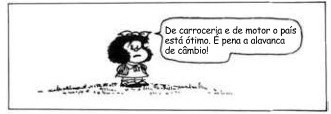Leia os textos para responder à questão.
Os pais dos burros
Uma das coisas de que mais sinto falta nesta era de computadores é abrir o pesado dicionário em papel para procurar
um termo e, no laborioso processo de localização pela ordem alfabética, ir descobrindo palavras novas. A busca por
digitação é objetiva demais. Esse misto de pensamento com
reminiscência me ocorreu durante a leitura de Word by Word
(palavra a palavra), de Kory Stamper, um delicioso e obsessivamente bem-escrito livro sobre dicionários.
Stamper, que é lexicógrafa profissional e durante vários
anos atuou como editora-associada da Merriam-Webster,
uma das principais casas de publicação de dicionários dos
EUA, conta a história da corrente de protestos de religiosos
que ela e seus colegas tiveram de enfrentar quando, numa
das reedições, modificaram um dos sentidos da palavra “casamento” para comportar a união entre pessoas do mesmo
sexo.
Entre várias boas histórias, Word by Word dá bem a ideia
do trabalho insano que é produzir um dicionário, descrevendo todas as fases do processo, da coleção de averbações
à fixação da(s) pronúncia(s), passando pela elaboração da
definição e pela etimologia.
Word by Word, além de entreter, nos educa, contribuindo, ainda que apenas marginalmente, para que nos tornemos
consulentes de dicionários um pouco mais conscientes.
(Hélio Schwartsman. Folha de S.Paulo, 02.06.2019. Adaptado.)
Pai de muitos
Do ponto de vista da descrição lexicográfica, que é a descrição do léxico da língua, o dicionário fornece um conjunto
de informações sobre cada uma das palavras que registra e
sua utilidade vai muito além daquele tira-teima sobre a ortografia e/ou significado de uma palavra.
Ao indicar os diferentes domínios de conhecimentos a
que uma determinada palavra está relacionada, ele não apenas amplia o conhecimento semântico dessa palavra, mas
também desvenda as relações de forma e conteúdo que ela
estabelece com outros vocábulos.
Para além das funções gramaticais, há um mundo de
valores sociais e afetivos relacionados à palavra que o dicionário pode revelar a partir da análise de estilo e linguagem
presentes no enunciado.
Portanto, quanto mais ampla for a seleção vocabular feita
por um dicionário, maior será a sua eficácia em desvendar a
trajetória de uma palavra na língua.
(Avram Ascot. Língua portuguesa e literatura, edição 76.)






